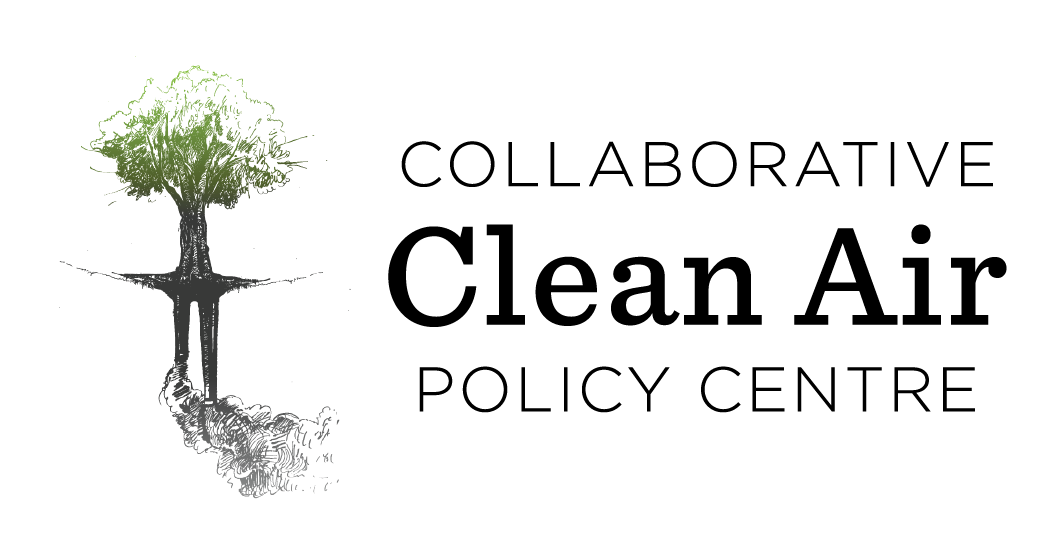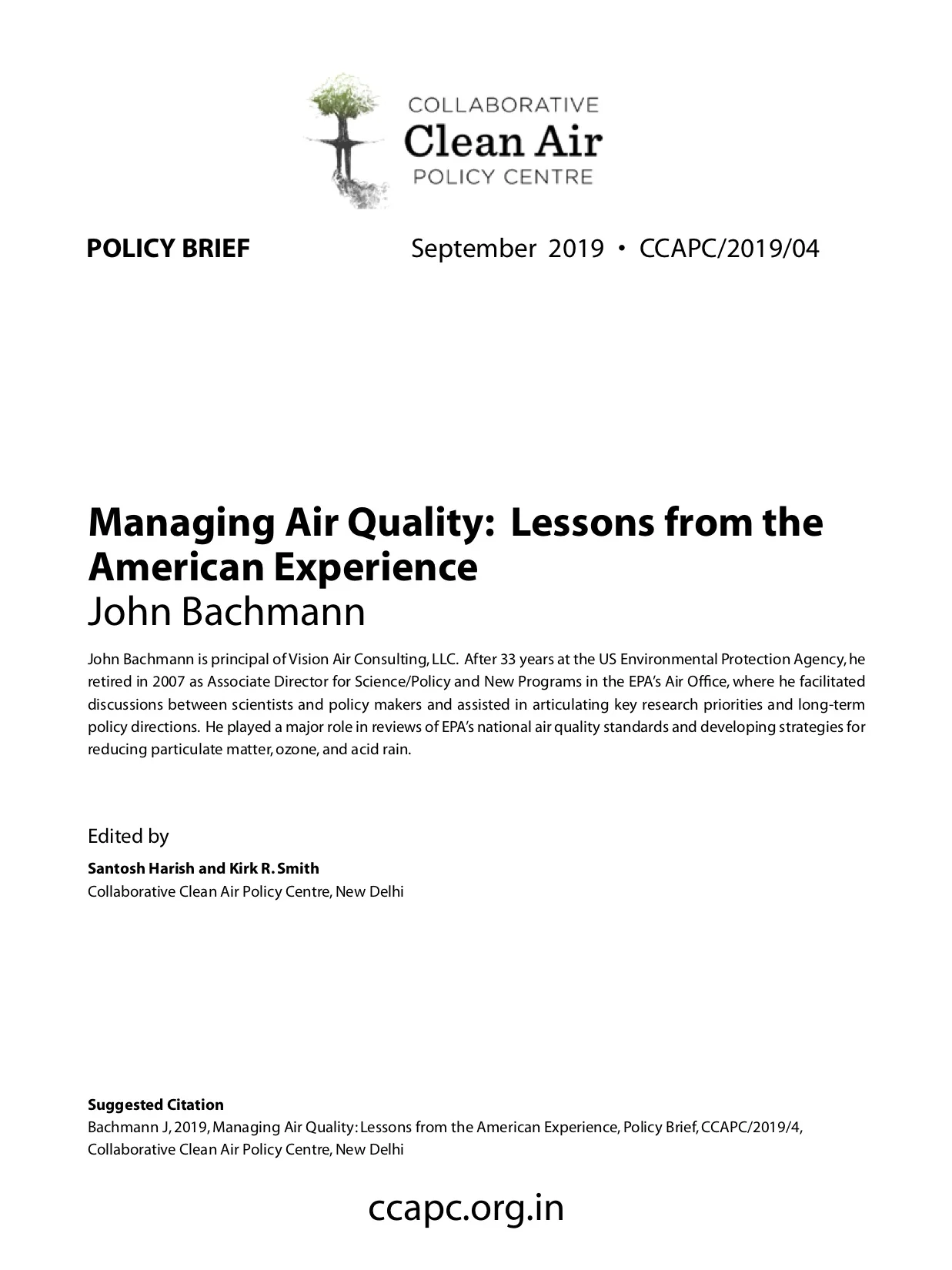This policy brief is a series of short commentaries from experts in atmospheric science and public health on the implications of the COVID-19 pandemic on communicating risks linked to air pollution in India. The series includes lessons offered by the lockdown-linked improvements on air quality management in India, syntheses of current evidence on links between air pollution and COVID-19 vulnerability, and the need for investing in improved public health data.
Read MoreWe document the changes observed in ambient air quality during this lockdown periods (March-May 2020) and reflect on what these mean for air quality management in India. Four lockdown periods were observed between March and May 2020, that entailed restrictions on all activities (more below) except for a few notified essential services. Across Indian cities, a 20%-60% reduction was witnessed in all the lockdown periods for PM2.5, PM10, SO2, and NO2 and 10%-60% increase in daytime O3 concentrations. Building on the Air Pollution knowledge and Analysis (APnA) database, we also outline notable city-specific trends and reflect on the lessons they provide for air quality management in India. These reductions demonstrated to the public that the only way to achieve “clean air” is by cutting emissions at the source, albeit not at the social and economic costs observed during the lockdown; other more sustainable, well-proven approaches exist. Air quality changes observed during the lockdown also show that we must adopt an airshed approach where the reductions in the city are complemented with similar reductions in the region to reach and sustain the national ambient standards.
Read MoreAir pollution does not follow administrative boundaries, and needs to be tackled at the regional “airshed” level at which it is caused. Identifying the appropriate candidates for airshed management requires scientific analysis using systematically developed emissions inventories and dispersion models to simulate the impact of the estimated emissions on air quality. Our analysis suggests that the National Capital Region (NCR) could form a good approximation for one such airshed boundary, and that tackling the much scrutinized air pollution issue in Delhi would benefit from greater coordination at the NCR level. 50-70% of the contribution to air pollution in Delhi and the other NCR cities is from within their city boundaries and from the rest of the NCR. In addition, given the many pollution control efforts over the last two decades in and around Delhi, there is a foundation on which to build.
Read MoreThe Government of India have taken many important steps to address rising air pollution but sustained progress remains a challenge. As it continues to take action, it may be helpful to look towards other countries that have transformed their most polluted cities in the past. While air pollution remains a significant challenge in both cities, the cases of Mexico City and Los Angeles offer two examples where a regional airshed approach resulted in significant reductions in priority air pollutants despite population growth and expanded car use.
Read More
The Pradhan Mantri Ujjwala Yojana (PMUY) has been successful in providing LPG connections to nearly every household in the country. However, LPG consumption by PMUY beneficiaries and other poor households is quite low. As a result, the larger objectives of the programme regarding improving health outcomes for rural women and children remain unmet. This calls for interventions that can help increase LPG consumption by poor and rural households. There are three challenges that need to be overcome for this: affordability, reliable access and behaviour change. In this paper, we provide some suggestions to address the affordability and reliable access challenges.
Read MoreIndia faces daunting challenges in reducing the significant health risks posed by airborne particle pollution. As evidenced in the National Clean Air Programme (NCAP), India is in a position to take advantage of the many scientific and technical advances in our understanding of air pollution over the last few decades, including a better understanding of serious health effects, improved methods for monitoring by satellite and other monitors, and more advanced knowledge on tracking emission sources. NCAP also shows an interest in considering what components of air quality management (AQM) programs have been crucial in making progress in the U.S. and some other area
Read MoreWe propose that Ujjwala 2.0 should have a two-tier, differential pricing for households: LPG at subsidized price for identified poor households, and at the unsubsidized price for other consumers. In order to achieve our objective, the subsidy rate for the identified poor households should be based on their willingness and ability to pay. Our analysis of the National Sample Survey data suggests that households should be willing to use LPG as the primary cooking fuel, if the fuel costs are within 4% of their total monthly expenditure. Subsidies could be calculated to ensure the prices the households face meet this condition.The quantity of subsidized LPG could be restricted to 126 kg, or 9 cylinders, per annum. The delivery of the subsidy would continue to be through conditional cash transfers (the existing PAHAL scheme), minimizing risks of diversion of subsidies to non-intended beneficiaries.
Read MoreWhat is the single largest source of air pollution exposure in India? You would be perhaps surprised to find that the answer, with a near consensus in the published scientific literature, is neither transportation nor stubble burning. Instead, it seems to be the millions of households across the country burning solid fuels like firewood in their homes for cooking,heating and other energy services.The resulting pollution not only has an enormous health impact on the households themselves, but it likely accounts for a quarter to a third of ambient air pollution across the country. Working towards ensuring universal access to cleaner fuels like LPG should therefore be one of the pillars of India’s pollution control efforts.
Read More






